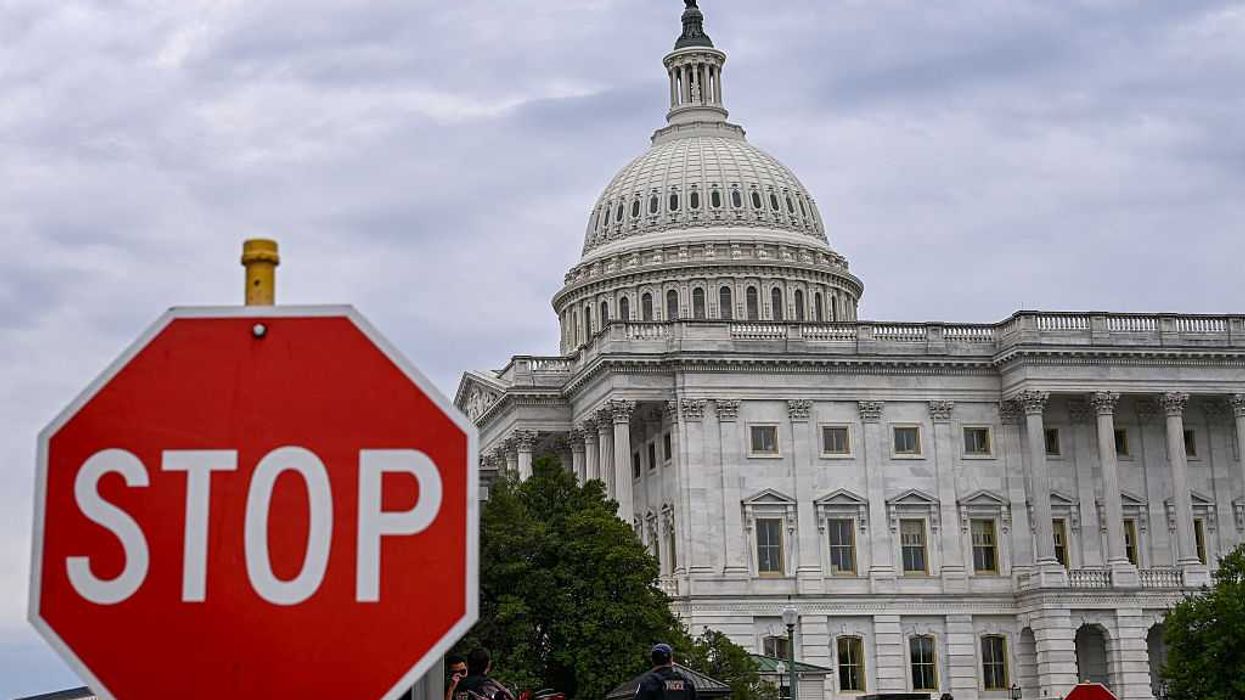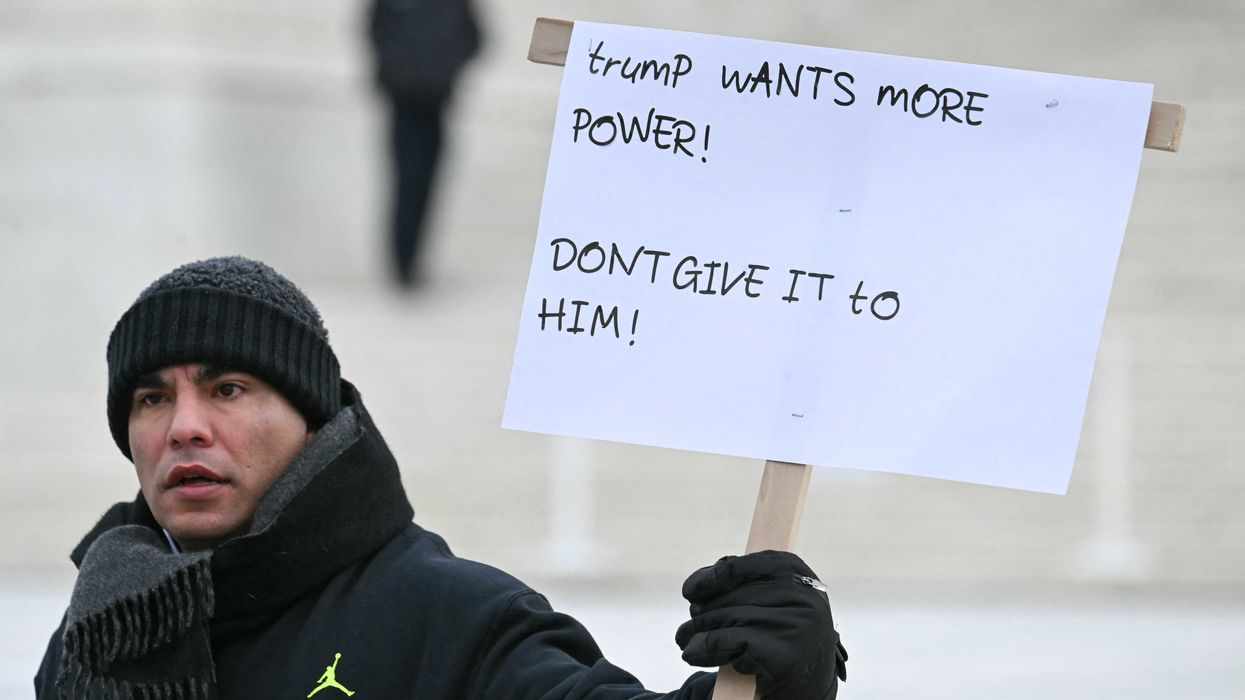GLENN: All right. We have Bill O'Reilly coming up in just about a half-hour.
Also, Texas Attorney General Ken Paxton, who I love this guy, he is going to tell us a little bit about the latest decision regarding the Texas voter ID law. Ken Paxton will be joining us for that at the top of hour number three. I want to spend a few minutes here sharing with you a guy -- he's from South Carolina?
PAT: He's from North Carolina. But he's in South Carolina.
GLENN: Yeah. He's going down to South Carolina, and he wants to restore the Confederate flag. This is just something that I just want to play. You got to be careful. Because sometimes people will sound totally reasonable. And I want you to listen to -- I don't agree with him. But I want you to listen to -- he sounds like a pretty normal guy, until one thing slips through his lips. As he's explaining to the press that the Confederate flag is not racist and he's not a racist, listen up.
VOICE: Women feel about abortion. That's the same -- same type of symbol. Again, I don't believe it's a symbol of racism. I don't believe it's a symbol of slavery. That's my personal view. But how they feel is their business.
GLENN: Stop for a second. Stop for a second.
That sounds American.
PAT: Yeah.
GLENN: Look, I don't think so, but that's my personal view. And if you want to view it a different way, I understand that. Sounds -- sounds reasonable.
VOICE: Hey, I go down the street, I see Martin Luther Coon. I shouldn't have said that. Martin Luther King.
PAT: Oh, my.
GLENN: Stop. Stop. Stop.
STU: Good God.
PAT: Good golly!
GLENN: Okay. So you know what's amazing about this, is it's clear that that's the way he refers to Martin Luther King always.
PAT: Oh, always. Always.
GLENN: Because he wasn't trying to make a point. He's just like, oh, see, you know I see on the streets, Martin Luther Coon -- King. Oh, I shouldn't have said that.
STU: No, you shouldn't have.
GLENN: Yeah, you're right on that one. You're right on that one.
STU: No, you shouldn't have.
GLENN: And maybe not just here. You should never say those things or think those things. But apparently you do.
STU: Wow.
PAT: Yeah. But I'm not a racist. I love everybody. I mean, some of my best friends are...
STU: Are, what? Don't finish that sentence, sir.
GLENN: You know, I just want to tell you, the banks are out of control. And they're colluding with the government. And the -- and the -- and the -- and the corporations, and they're getting rich, and we're not.
And, you know, I think that everybody really kind of understands -- and if you don't agree with it, that's fine. It's just these damn Jew bank -- I mean, I shouldn't have said that. I shouldn't have said that.
STU: I shouldn't have said that. I shouldn't have said that. Darn it.
GLENN: Darn it. Darn it. No, I love the Jews. I just think they all should be shoved into an -- I shouldn't have said that. Other room, I meant. That's what I meant.
STU: It's incredible.
GLENN: Because I'm going to give them cake.
It's crazy.
PAT: Your colors are shining through.
STU: Yeah, that's really, really -- and I will say that's part -- that is an effect of the way -- I am 100 percent behind people who say, "Let's out these white supremacists. Let's mock them. Let's expose their viewpoints." You know, there's these weird things now, where they're like -- there's these Twitter accounts that are taking pictures of the people in the rallies, and they're trying to give them consequences at their jobs and all those other things.
You know -- you know, those are weird.
GLENN: Yeah, I know.
STU: But what that does in the end is put these people back in the closet.
GLENN: Back in the closet.
STU: They don't admit it. I'd rather hear these idiot -- I'd rather watch every one of them walk down the street with a torch because, instead of this --
GLENN: Right. I want to know who they are. I want to know who they are.
STU: I want to know who they are. So I can avoid them.
GLENN: Yes.
PAT: And it's interesting too, because a lot of them are proud of it. They don't have any problem being racist. They're proud of it.
STU: Yeah.
GLENN: Well, I will tell you this, this should tell white people -- you know, you probably -- I've told this story before, and I don't remember what city it was in. And I don't want to say because I don't remember for sure. But I was there with the -- I think the chief of police, the head of this theater, and somebody else. Maybe somebody from the mayor's office. I don't even remember. And I'm standing backstage, and we're talking -- were you there, Pat?
PAT: No. But it was in Louisville --
GLENN: So I -- it was --
STU: I shouldn't have said that.
GLENN: No, it wasn't. It actually wasn't.
PAT: It wasn't there. It was in Nova Scotia.
GLENN: No, seriously, it was not in Louisville.
STU: Legitimately, I do remember where it was, and it was not Louisville.
GLENN: Yeah. And so I'm standing backstage. And they said, "We're on CST." I said, "I like to start the shows on time. You know, people come here. Let's start on time. And I can actually run over, I hear, from time to time. So let's start on time." And the head of theater and the sheriff and the police or whatever, they're all standing around, and they said, "Well, you're on CST here." And I said, "What's CST?" And they said, "You know, Colored Standard Time. Coloreds never run on time." And I'm like, "What? What? What?" I mean, I couldn't believe it.
And this kind of thing where this guy is talking and he sounds kind of reasonable --
JEFFY: Yeah.
GLENN: -- warning. That should be a warning for you to wake up on who you're standing next to. They might sound reasonable, but they very well may not be. And also, America, wake up. This stuff is exactly what our black neighbors are talking about that we never see.

 ALEX WROBLEWSKI / Contributor | Getty Images
ALEX WROBLEWSKI / Contributor | Getty Images
 JIM WATSON / Contributor | Getty Images
JIM WATSON / Contributor | Getty Images Joe Raedle / Staff | Getty Images
Joe Raedle / Staff | Getty Images AASHISH KIPHAYET / Contributor | Getty Images
AASHISH KIPHAYET / Contributor | Getty Images